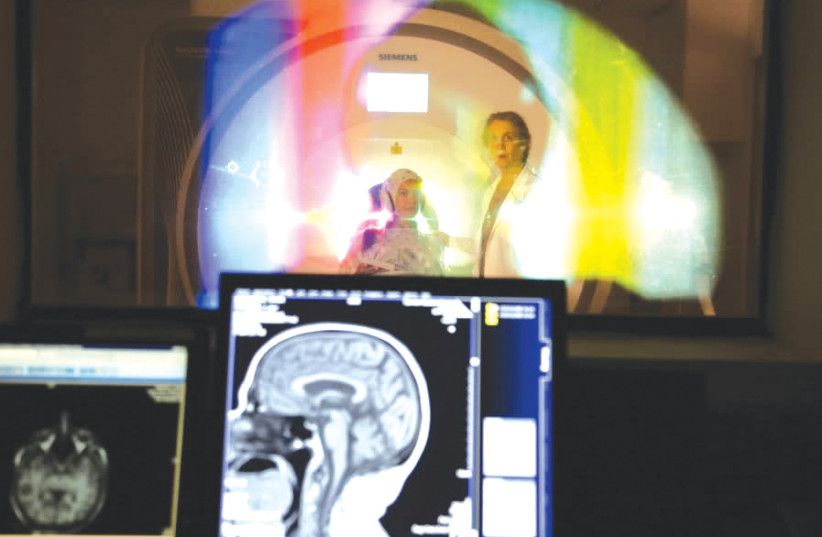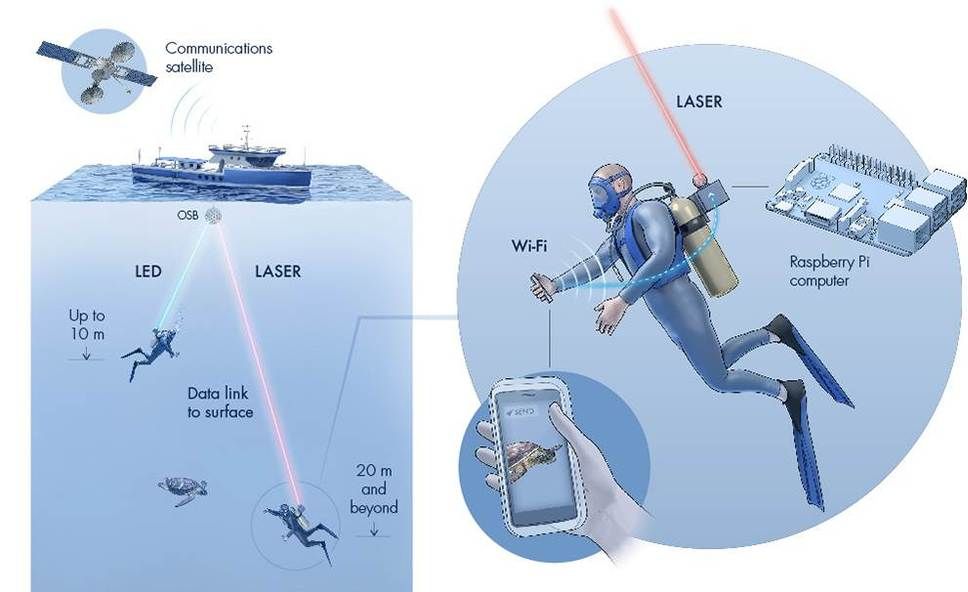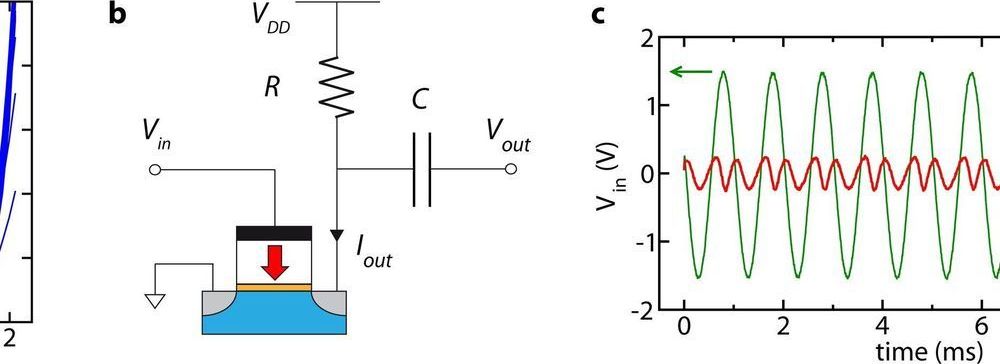Click on photo to start video.



Data governs our lives more than ever. But when it comes to disease and death, every data point is a person, someone who became sick and needed treatment.
Recent studies have revealed that people suffering from the same disease category may have different manifestations. As doctors and scientists better understand the reasons underlying this variability, they can develop novel preventive, diagnostic and therapeutic approaches and provide optimal, personalized care for every patient.
To accomplish this goal often requires broadscale collaborations between physicians, basic researchers, theoreticians, experimentalists, computational biologists, computer scientists and data scientists, engineers, statisticians, epidemiologists and others. They must work together to integrate scientific and medical knowledge, theory, analysis of medical big data and extensive experimental work.
This year, the Israel Precision Medicine Partnership (IPMP) selected 16 research projects to receive NIS 60 million in grants with the goal of advancing the implementation of personalized healthcare approaches – providing the right treatment to the right patient at the right time. All the research projects pull data from Israel’s unique and vast medical databases.
HEALTH AND SCIENCE AFFAIRS: 16 Israeli projects get NIS 60m. to innovate next stage of healthcare.
“Now, nearly 2,000 people in and around Leticia are sick with COVID-19. About 70 have died. That might not sound like a colossal death toll at first. But because the surrounding state of Amazonas is sparsely populated, this amounts to the highest per-capita death rate in all of Colombia, according to figures from Colombia’s Health Ministry.”
The governor of Amazonas, Colombia, says it was impossible to cut the area off from Brazil, even as the virus spiked. Now the Colombian border town of Leticia is a coronavirus hot spot.

Like most galaxies, the Milky Way hosts a supermassive black hole at its center. Called Sagittarius A*, the object has captured astronomers’ curiosity for decades. And now there is an effort to image it directly.
Catching a good photo of the celestial beast will require a better understanding of what’s going on around it, which has proved challenging due to the vastly different scales involved. “That’s the biggest thing we had to overcome,” said Sean Ressler, a postdoctoral researcher at UC Santa Barbara’s Kavli Institute for Theoretical Physics (KITP), who just published a paper in the Astrophysical Journal Letters, investigating the magnetic properties of the accretion disk surrounding Sagittarius A*.
In the study, Ressler, fellow KITP postdoc Chris White and their colleagues, Eliot Quataert of UC Berkeley and James Stone at the Institute for Advanced Study, sought to determine whether the black hole’s magnetic field, which is generated by in-falling matter, can build up to the point where it briefly chokes off this flow, a condition scientists call magnetically arrested. Answering this would require simulating the system all the way out to the closest orbiting stars.


A team of scientists, including Chief Investigator Ilya Mandel from the ARC Centre of Excellence for Gravitational Wave Discovery (OzGrav) at Monash University, recently studied what happens to rotating massive stars when they reach the end of their lives.
Stars produce energy by fusing lighter elements into heavier ones in their core: hydrogen into helium, then helium into carbon, oxygen, and so on, up to iron. The energy produced by this nuclear fusion also provides pressure support inside the star, which balances the force of gravity and allows the star to remain in equilibrium.
This process stops at iron. Beyond iron, energy is required to sustain fusion rather than being released by fusion. A heavy iron star core contracts under gravity, creating a neutron star, or if it is heavy enough, a black hole. Meanwhile, the outer layers of the star explode in a brilliant flash, observable as a supernova. However, some massive stars seem to completely disappear without any explosion. Theories suggest that these massive stars completely collapse into black holes, but is that possible?

Radio waves travel poorly through the water, which makes it difficult for divers or submersibles to wirelessly transmit information to the surface. Scientists are trying to change that, though, by developing an underwater version of Wi-Fi.
Back in 2018, we heard how researchers at Saudi Arabia’s King Abdullah University of Science and Technology (KAUST) had used lasers to transmit HD video through water. Their experimental new system, known as Aqua-Fi, builds on that technology.
A user such as a scuba diver would start by sending data (such as photos or videos) from a smartphone contained in a watertight housing. That data would initially be transmitted in the form of radio waves, going just a few feet to a small device mounted on the diver’s air tanks.

It’s easy to take time’s arrow for granted — but the gears of physics actually work just as smoothly in reverse. Maybe that time machine is possible after all?
An experiment from 2019 shows just how much wiggle room we can expect when it comes to distinguishing the past from the future, at least on a quantum scale. It might not allow us to relive the 1960s, but it could help us better understand why not.
Researchers from Russia and the US teamed up to find a way to break, or at least bend, one of physics’ most fundamental laws of energy.

A bug in a protocol used by virtually all Internet of Things devices exposes millions of users to potential attack, a researcher reported Monday. The fault centers on the Universal Plug and Play protocol, a 12-year-old implementation that simplifies connections among network devices such as computers, printers, mobile devices and Wi-Fi access points.
Billions of devices are theoretically vulnerable, the report stated, but only those with UPnP activated currently face risk of attack.
Turkish security engineer Yunus Çadirci uncovered the UPnP bug, named CallStranger, that could be exploited to gain access to any smart device such as security cameras, printers and routers that are connected to the Internet. Once access is gained, malicious code can be sent through network firewalls and other security defenses and reach internal data banks.

Frequency multipliers, circuits that can produce signals with multiple frequencies, are essential components for a number of technological tools, particularly wireless communications systems. Most existing multipliers, however, are built using filtering and amplification circuits that are bulky and rapidly drain a lot of power.
Researchers at NaMLab in Germany have recently devised a single ferroelectric field-effect transistor that can serve both as a full-wave rectifier and frequency multiplier. The device they developed, presented in a paper published in Nature Electronics, is fully reconfigurable and energy-efficient, as it can be used in isolation, not requiring any additional circuits.
“Our institute (NaMLab) has been doing research on ferroelectric hafnium oxide (HfO2) since this material’s ferroelectric properties were discovered in 2007,” Halid Mulaosmanovic, one of the researchers who carried out the study, told TechXplore. “An attractive electronic device that can be made using this material is a ferroelectric field-effect transistor (FeFET), which resembles conventional logic transistors, but has a ferroelectric layer in the gate stack.”